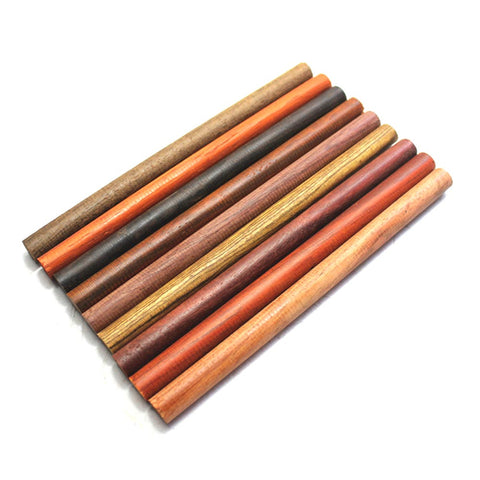What Equipment Do You Need For Wood Turning?
Woodturing is a captivating form of woodworking that allows artisans to transform raw blocks of wood into beautiful and functional objects. Whether you're a beginner or an experienced woodturner, having the right wood turning kits are crucial for success in this craft. In this article, we will explore the essential tools and equipment you need to embark on your wood turning journey and create stunning turned wooden pieces.
- Lathe: The centerpiece of any woodturning workshop is the lathe. A lathe is a machine that rotates the wood while you shape and carve it with cutting tools. When choosing a lathe, consider factors such as size, motor power, and speed control options. Mini lathes are popular among beginners due to their compact size and affordability, while larger lathes offer more versatility and power for advanced projects.
- Turning Tools: Turning tools are the heart and soul of wood turning. These specialized tools are designed to cut and shape the wood as it spins on the lathe. Essential turning tools include gouges, skews, parting tools, and scrapers. These tools come in various sizes and profiles, each serving a specific purpose in the woodturning process. Invest in high-quality tools made from high-speed steel (HSS) or carbide for durability and sharpness.
- Tool Rest: A tool rest is a support system that holds the turning tools in place while you work. It provides stability and control, allowing for precise and smooth cuts. Tool rests typically come in different lengths and shapes to accommodate various turning projects. Adjustable tool rests are particularly useful as they allow you to position the tool at different angles and heights for optimal control.
- Faceplate and Drive Centers: Faceplates and drive centers are essential for mounting the wood onto the lathe. A faceplate attaches to the front of the wood, providing a secure connection for turning larger or irregularly shaped pieces. Drive centers, on the other hand, are mounted on the tailstock and help drive the wood as it rotates. Having a variety of faceplates and drive centers of different sizes expands your wood turning possibilities.
- Chucks: Chucks are versatile holding devices that allow you to securely attach the wood to the lathe. They provide a firm grip, enabling you to work on both the exterior and interior of the wood. Chucks come in various designs, including four-jaw chucks and scroll chucks. Investing in a high-quality chuck offers stability and precision in your turning projects.
- Safety Gear: Wood turning involves sharp tools and high-speed rotations, making safety gear a top priority. Protective equipment such as safety glasses or goggles, a face shield, and a dust mask are essential to protect your eyes and respiratory system from flying debris and fine dust particles. Additionally, a lathe with a safety guard and proper safety protocols ensure a secure and accident-free woodturning experience.
- Sandpaper and Finishing Supplies: Achieving a smooth and polished finish is crucial in woodturning. Sandpaper of various grits allows you to progress from rough to fine finishes, removing any imperfections and enhancing the wood's natural beauty. Additionally, finishing supplies such as wood stains, oils, waxes, and lacquers add aesthetic appeal and protect the wood from moisture and wear.
Conclusion
Woodturning is a rewarding craft that requires the right tools and equipment to bring your creative vision to life. From the lathe itself to turning tools, chucks, safety gear, and finishing supplies, each piece of equipment plays a vital role in your woodturning journey. By investing in high-quality tools and following proper safety protocols, you can embark on a fulfilling and enjoyable woodturning experience, creating exquisite turned wooden pieces that showcase your skill and craftsmanship. So, gather your equipment, unleash your creativity, and let the chips fly as you delve into the art of wood turning.

